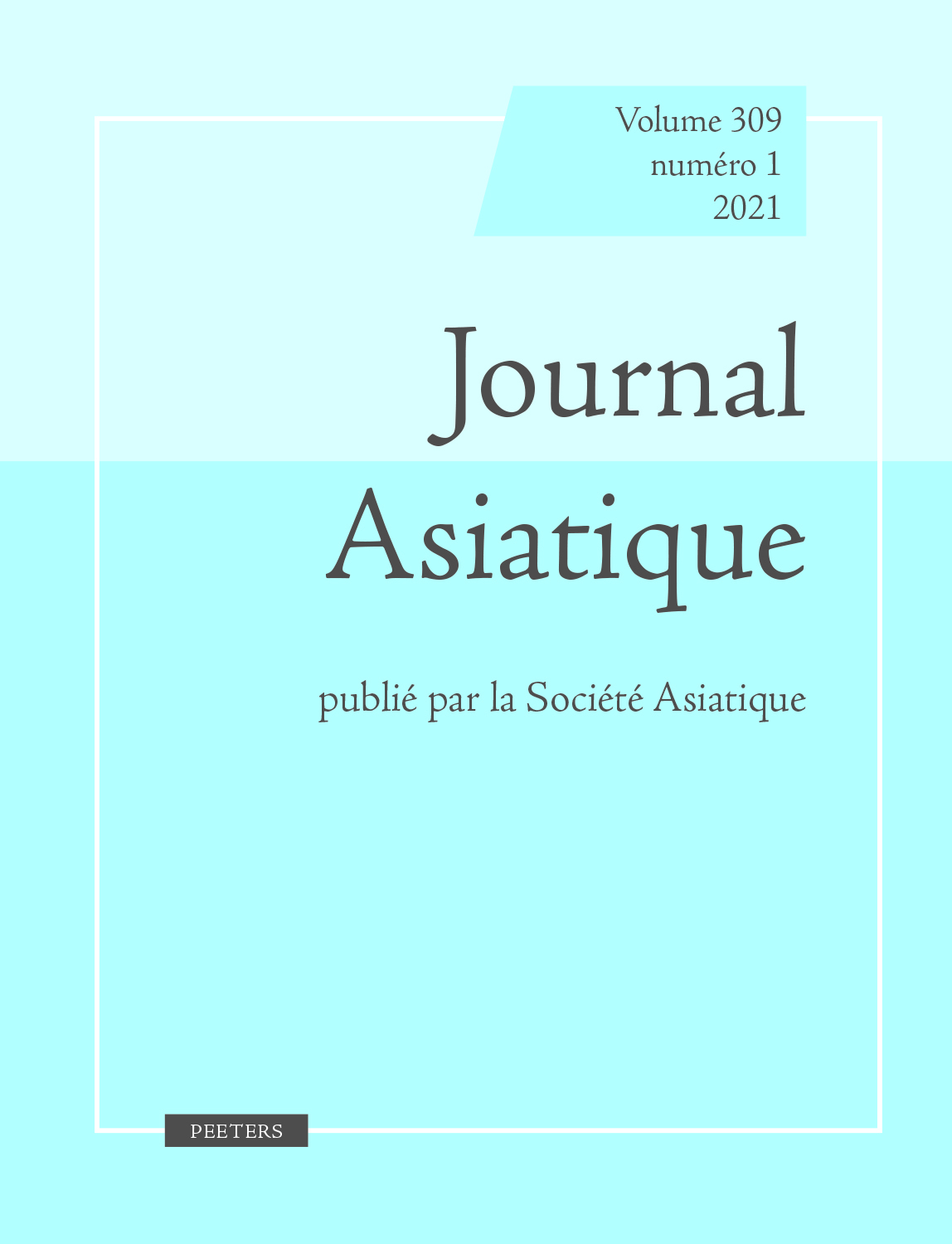 previous article in this issue previous article in this issue | next article in this issue  |

Preview first page |
Document Details : Title: The Inquiry of Devī Vimalaprabhā and the Buddhism of Gilgit Subtitle: On Narrative as Repository of Textual Sources and Historical Data Author(s): SCHERRER-SCHAUB, Cristina Journal: Journal Asiatique Volume: 312 Issue: 2 Date: 2024 Pages: 189-225 DOI: 10.2143/JA.312.2.3294147 Abstract : The earliest attestation of a *Vimalaprabhāparipṛcchā (Vp) appears in the lHan dkar catalogue of the Tibetan tranlations kept at the imperial residence of lHan dkar (date of composition c. eighth to early ninth c. AD). The framework narrating the previous lifes of its heroine construes her forgotten pedigree in maieutic coordination with the regional context, and informs the reader about the political and royal genealogy linking the region of Li yul (Khotan) with the neighboring kinglets of Bru zha (Gilgit) and sKar do in sBal ti (Baltistan). The manuscripts and objets d’art discovered in these regions, as well as the rock inscriptions of the Upper Indus regions and ethnographic reports, resonate with the veiled narrative of the Vimalaprabhāparipṛcchā, whose action extends far beyond to U’rgyan (Swāt), Sa’ ‘dzin (= Gandhāra), Ka spar (Kāśmīr), and possibly also to the Iranian borders. The text refers to the period in which the Tibetans took control twice over part of these regions, including the territory of the Palola Ṣāhi, a local dynasty of petty kings sporting an impressive titulature and royal names pretending to show ancient link with the Gupta rulers. This is the case with Palola Ṣāhi Nandivikramādityanandi whose bronze, dedicated on April 26 or 27, 714 AD, offers interesting clues contributing to characterize the Buddhist community of Gilgit to whom a copy of the ordonnance (bka’ tshig) of Khri srong lde btsan, officially acknowledging the Buddhist religion and dating to 779 AD, was sent. La première attestation d’un *Vimalaprabhāparipṛcchā (Vp) se trouve dans le catalogue des traductions tibétaines déposé au palais impériale de lHan dkar (date de composition c. huitième-début du neuvième siècle de n. è.). Le récit des vies antérieures de son héroine construit un passé oublié en coordination maïeutique avec le contexte régional et informe le lecteur au sujet de la généalogie politique et royale qui lie le Li yul (Khotan) avec les roitelets voisins de Bru zha (Gilgit) et sKar do au sBal ti (Baltistan). Les manuscrits et les bronzes dits de Gilgit, les inscriptions sur roche qui émaillent le Haut Indus ainsi que les travaux des ethnographes font écho aux données narratives du Vp dont l’action s’étend bien au-delà, vers U’rgyan (Swāt), Sa’ ‘dzin (= Gandhāra), Ka spar (Kāśmīr) et apparemment aussi vers les frontières iraniennes. Le texte se réfère aux deux périodes pendant lesquelles le Tibet exerce son pouvoir sur une partie de ces régions, y compris le territoire des Palola Ṣāhi, une dynastie de roitelets locaux, dont la titulature et l’onomastique voudraient affirmer leurs liens avec les Gupta. C’est le cas du Palola Ṣāhi Nandivikramādityanandi dont l’un des bronzes, dédié le 26 ou le 27 avril 714, présente des données intéressantes qui contribuent à caractériser le type de communauté bouddhique de Gilgit à qui fut adressée une copie de l’ordonnance (bka’ tshig) de Khri srong lde btsan datée de 770 AD, portant sur la reconnaissance officielle du bouddhisme au Tibet. |
|


